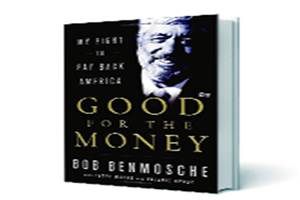THE FINANCIAL crisis is, by far, the most widely written about event in the past seven-eight years, with the thrust being generally directed at capitalist greed. In all these narratives, the name of American International Group (AIG) features when the advanced stage of the crisis is discussed—the case of a steady insurance company going under is highlighted as an example of failure.
The government and public had almost given up on this organisation when the crisis struck. It was at this time that there was a change in guard, with Bob Benmosche assuming power as its chief. His claim to fame at this stage was that he was the former CEO of MetLife, which probably provided some credentials for embarking on a venture that appeared doomed from the start.
The story of how Benmosche turned around the company is at the heart of the book called Good for the Money. Even though his name is not in the top league of CEOs whose names reverberate in the financial world today, he is still quite well known in the insurance world. Hence, it’s refreshing to read about how he turned around the company—AIG not just repaid the public treasury a sum of $182.3 billion, which was taken as debt, it also went ahead and paid an additional sum of $22.7 billion in profit. In all such case studies, the ultimate proof of success can be judged by the performance of the company and, in this case, AIG made more repayments than any other enterprise. This makes Benmosche’s contribution quite distinct.
A significant point that has been reiterated often in the book is the stance taken by Benmosche on giving people their due. He never compromised on his own pay packet at a time when executive pay was considered scandalous and received great opprobrium. This was fairly unconventional, as the crisis had generated a majority view of an exploitative senior management class. But Benmosche’s view was that there is a value attached to the capability of any CEO, which has to be paid, provided he delivers results. Hence, if AIG had to change for the good, he, as its CEO, deserved his reward.
Benmosche was quite indifferent to the criticism from the government and public over his company-sponsored trip to Croatia just as he took over as CEO. He also never agreed to the staff taking a cut in their bonuses and the argument put forward strongly, even to the government, was that they were not responsible for the downside and should not be penalised for it.
The book, co-authored by Peter Marks and Valerie Henry, is an autobiography that traces Benmosche’s life from childhood to the final victory when AIG repaid all its dues. Hence, there’s a considerable length devoted to Benmosche’s personal history, including his final affliction with cancer, which never came in the way of his work, with effective treatment giving him almost four years of life beyond what was predicted by the medical fraternity. The book drags a bit here, as readers aren’t really interested in knowing the back story of a protagonist who isn’t a universal celebrity. Knowing about Steve Jobs’ life could be of greater interest to the reader than knowing about Benmosche’s, though admittedly, his was also a remarkable struggle to reach where he did.
The book details the sale of two group companies and the turnaround of AIG in three years’ time. There was an IPO of AIA—American International Insurance in Hong Kong—which was a resounding success. This was combined with the sale of American Life Insurance Company (ALICO). These were landmarks in the turnaround story of AIG.
Three big names—Timothy Geithner, Ben Bernanke and Hank Paulson—had backed AIG for the rescue package and were relieved when the turnaround took place. But, as the authors maintain, the public remained critical, as the payback involved their money and this was unforgivable. The brand was tarnished and repeated surveys in 2010 showed that the reputation of AIG was extremely low. But in 2011, as AIG became profitable, public opinion changed. The final vindication of AIG’s success could be judged from these facts: stock price recovered to near pre-crisis levels; and 85% of policy-holders, 31% of staff with over 10 years with the company and 57% of leaders remained with the company.
The book is readable even though a lot has been written about Benmosche’s personal struggles. It might have become axiomatic for such leaders to delve into their past, but the narrative drags because of it.
Madan Sabnavis is chief economist, CARE Ratings


